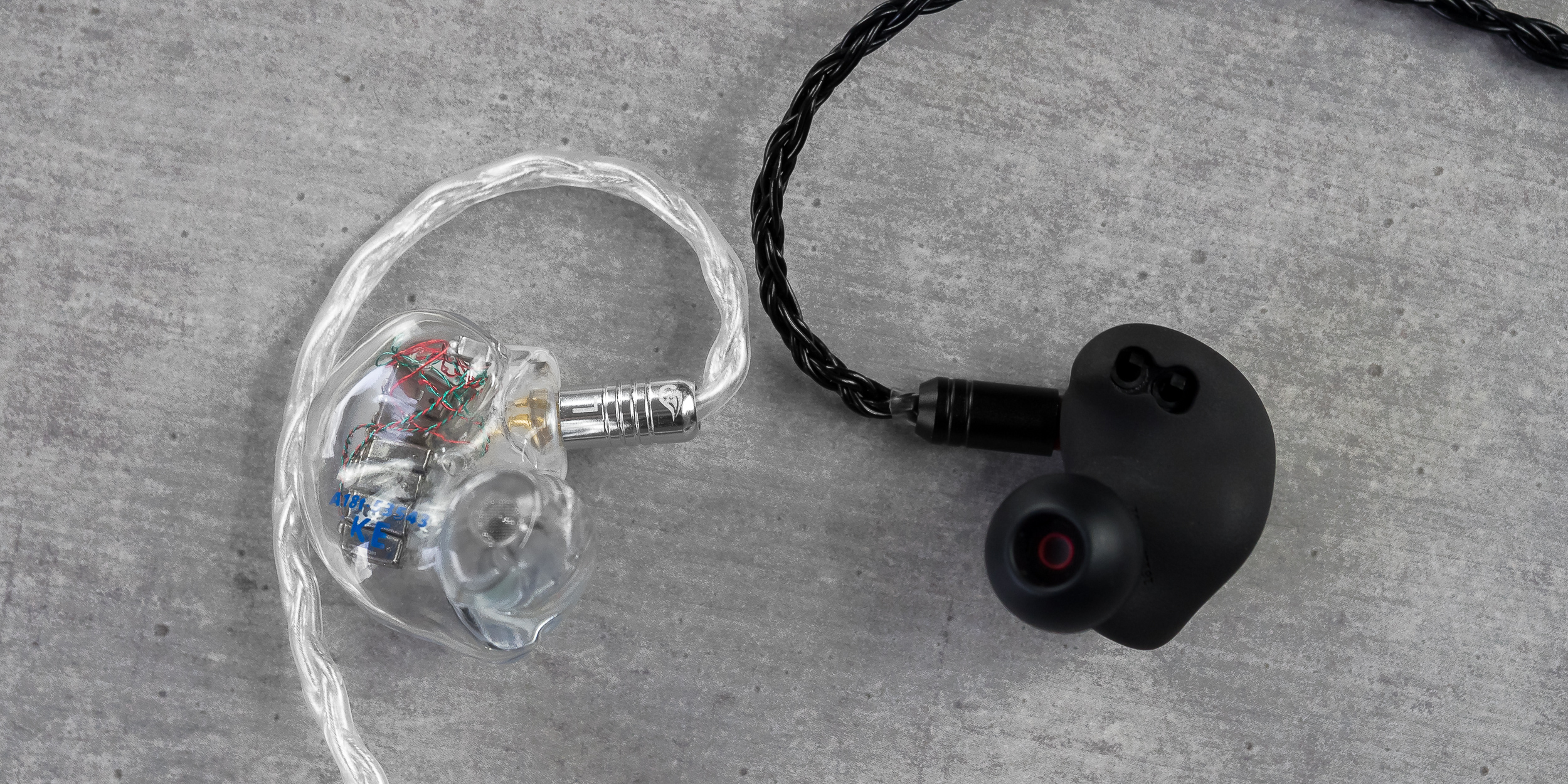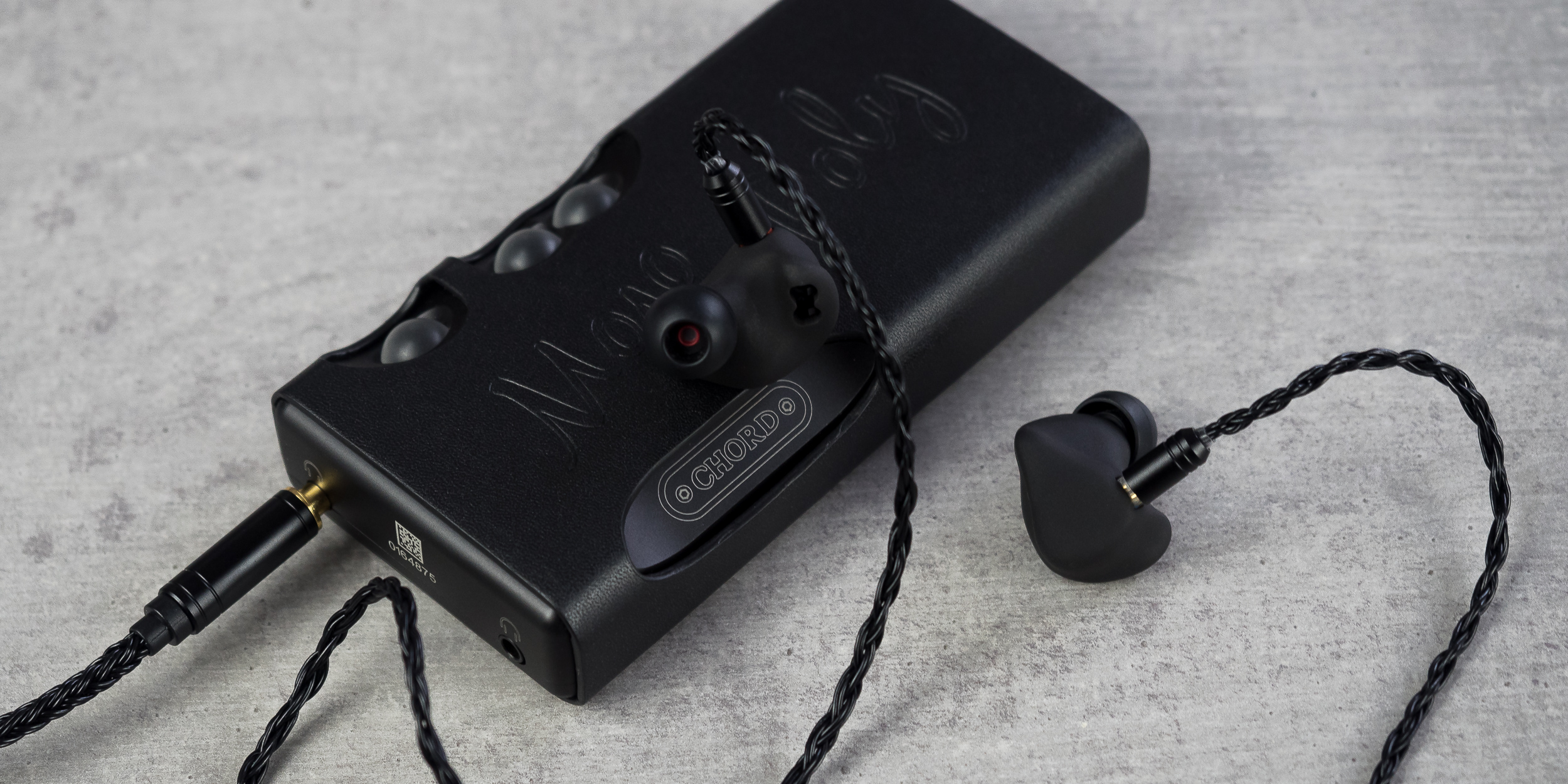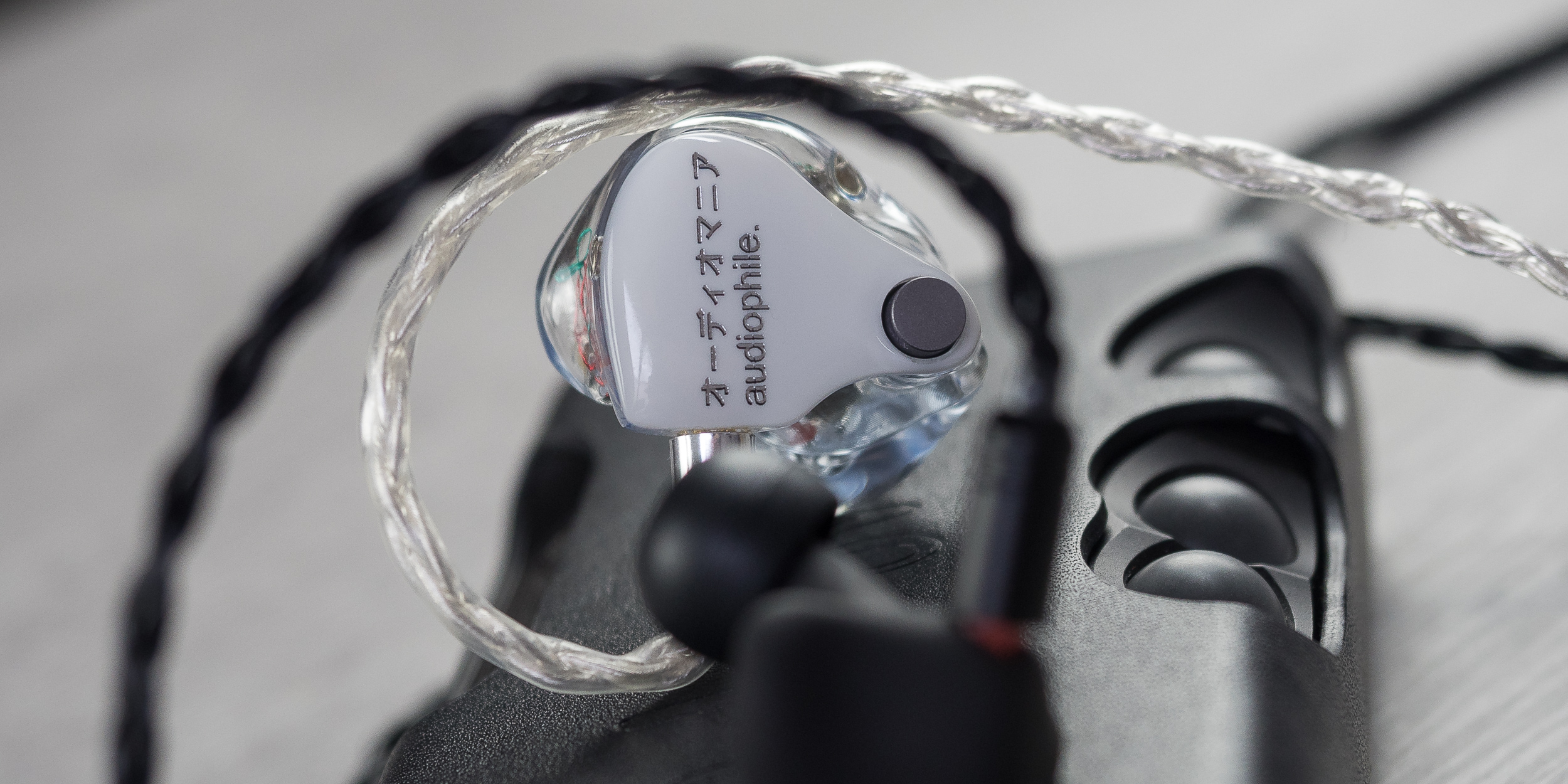
It is no secret that the reference-tuned InEar ProPhile 8 are one of my favorite IEMs. In my opinion, they are possibly the best set of universals on the market. I was absolutely floored when I reviewed them three years ago on Headfonics. That was just days before the 18-driver flagship A18t from 64 Audio was announced as a new studio reference. It’s only now that I have the chance to compare them both side by side. Yet this is still a very important comparison as neither IEM has lost any appeal as a true reference product.
Click here to jump to my InEar ProPhile 8 review on Headfonics from 02/2017.
Quick Navigation
Preliminaries
Setup of the InEar ProPhile 8
I have replaced PP8’s lousy default cable with a 16-core SPC cable that has lower resistance and greatly minimizes crosstalk. These IEMs definitely sound best to me with both switches off. Unfortunately, they are (still) not available as a custom-fit version. I am thus using the JVC SpiralDots for maximum comfort and a more open treble presentation.

The universal 64 Audio U18t
For consistency, it would make more sense to compare the ProPhile 8 with the universal U18 Tzar. However, I feel like – among the neutral monitors – the two couldn’t be further apart. The U18 has much more pronounced bass and treble, slightly congesting the midrange. Though the detail retrieval is phenomenal, it can come off as a bit splashy and creates a unique kind of fun signature. If you are interested in a more natural and neutral presentation, the custom version (A18) is definitely the way to go. Only the custom design allows the tia-driver to fully function as intended.
64 Audio A18 “Tzar” with apex m15
My A18t have been upgraded with a thick 8-core SPC cable, very reminiscent of the one included by Oriveti. Based on my experience, the A18t aren’t as sensitive to cables as many reviews suggest and the absence of LID isn’t very noticeable with most higher quality amps. I much prefer the A18t with the m15 apex module and I never switched back again. In comparison, the m20 modules make the Tzar sound borderline boomy and thick, in my opinion.
Comparing Comfort and Fit
You’d be mistaking if you’d expect nothing more than the obvious differences between universal and customized builds. The InEar StageDiver design, on which the ProPhile 8 is based, is very close to that of a CIEM. If it weren’t for the switches on the inside of the cymba, these would be some of the most comfortable IEMs as long as you find the perfect ear tips for your individual anatomy.
Depending on the technical IEM design, the universal StageDiver and ProPhile can come shockingly close to the average CIEM sound. However, 64 Audio is not your average manufacturer. My A18t have a perfect fit and I can achieve even better isolation with the m15 module than any universal with silicone tips. However, especially apex stands out in terms of comfort. The “air pressure exchange” works phenomenally and is very apparent when switching to the PP8. I can feel how the universal sucks into my ear canal and when taking the IEMs out, I notice a very strong pressure on the inside which could potentially perforate the ear drum when done too quickly. One could opt for a less tight seal on the universal with rolling the tips, yet that results in poorer sub-bass extension.
Sound
Tuning and Bass
Right off the bat you can tell that the A18t have a more pronounced body. They have a warmer tuning and create more weight. In contrast, the ProPhile 8 seem light-footed and more agile. The bass on the PP8 is not pronounced but can deliver enough punch when asked for. However, I noticed that I tend to raise the volume to uncomfortable levels when I need to catch all details in the lowest octaves. When I lower the volume on the A18t, I can achieve a fairly similar presentation with the same amount of detail retrieval.
Raising the volume on the A18t, the bass creates a hint of boom. Luckily, apex manages to evade any form of bloat and creates a unique bass experience that cannot be interpreted by SPL curves alone. Even though mid- and upper bass are stronger pronounced, the sub-bass comes through with authority and unparalleled tightness. The available headroom is simply breathtaking.
Midrange
InEar absolutely nailed the midrange with the ProPhile 8. Voices sound realistic, well separated, intimate and upfront. No Harman-target will ever come close to this realism. The PP8 manage to avoid any form of aggressivity unless the track calls for it. Male and female voices absolutely shine when reproduced by this wonderful IEM. In comparison, the midrange of the A18 sounds a bit more congested and even recessed, though in the broad comparison, I would describe voices on the A18t as intimate still with a touch of warmth.
Treble, Soundstage & Resolution
Both monitors have an extremely balanced and even treble that works very well in the overall tuning. No details will go amiss with either model. The tia driver of the A18 does create a bit more shimmer and the superior extension helps to span a wider stereo image that also impresses with more depth. The differences of the two monitors make it sound as if they were worlds apart. However, I must stress that I am emphasizing on nuances.

Verdict
The InEar ProPhile 8 still have a very special place in my heart. For me, they still hold up as one of the best universal monitors on the market – for studio and audiophile music consumption alike. But overall, as a custom-fit IEM, the 64 Audio A18t just seem much more advanced and greatly improve on comfort, isolation, soundstage, fatigue and extension. The more musical tuning of the A18t is not necessarily a plus, in my humble opinion. A blend of the two would be the ultimate experience for me.
InEar has meanwhile released the ProMission X. There are strong similarities to the ProPhile 8, though the tuning has been slightly adjusted to a v-shape for a more relaxed presentation and some sparkle. For now, I will just assume that the original PP8 is more up my alley.
64 Audio has also just announced the A18s, a variant of the 18-driver design especially catering to the needs of stage and studio. Next to LID and a higher sensitivity, 64 Audio aimed for more bass. This is good news for me, because that reassures me that the A18t are still the best available CIEM for my preferences.
